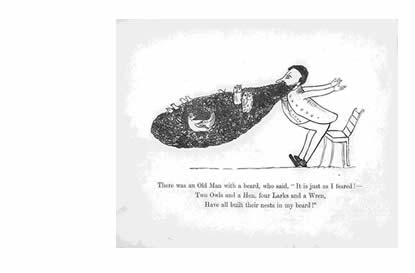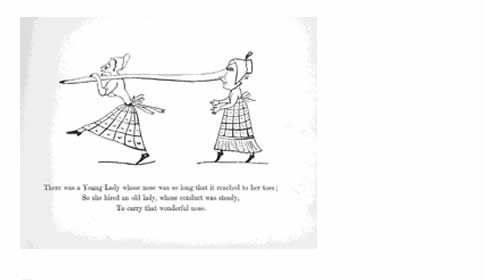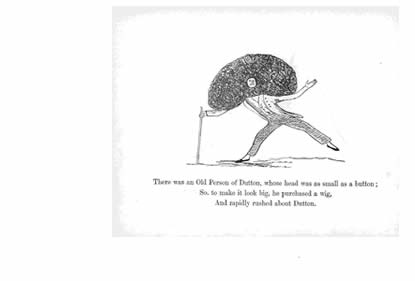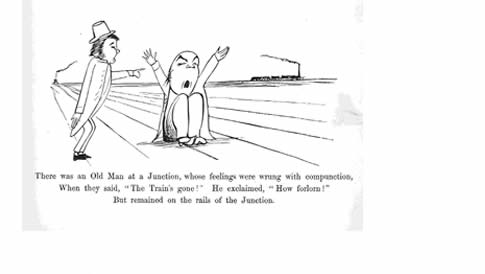Edward
Lear (1812 - 1888)
Lear preferred the term NONSENSE - the term limerick is listed by the
Oxford English Dictionary as having first appeared in 1898 but is of much
greater antiquity as a literary form.
LIMERICK - a verse form in five lines ( aabba ) and the usual vehicle
for bawdy ("There was a young man from Brent...etc etc."). The
verse form is exclusively comic and can be found at the beginning of the
eighteenth century ( Mother Goose Melodies for Children 1719) and later
( The History of Sixteen Wonderful Old Women , 1821).
One of Lear's own nom-de-plume was Derry-down-Derry, the name of a Fool
in a Mummer play.
His first Book of Nonsense was published in 1846 but
was an ephemeral affair and no copy is thought to have survived. The second
edition was published by Thomas McLean in 1855 and a third came out in
1860 - on economic grounds using using woodcuts instead of lithography.
These examples of his work are reproduced from The Book of Nonsense
and More Nonsense published by Warne London c1885. Each measures
20 x25cms.
Lear was a prodigiously prolific landscape painter in watercolour and
oils, having learnt much about the latter from William Holman Hunt. He
was equally active as an illustrator of birds and plants. His most enduring
work is his corpus of Nonsense illustration, drawn quickly, with great
spirit and intense feelings of melancholy, anxiety, and dwelling on the
grave results of disorder.
Looking at many scrap albums of the period, and the more spontaneous works
of Cruikshank and Leech, it is perfectly possible to see where Lear is
coming from. The difference is in the poetic insight he brings to human
feelings expressed through the medium of supposed nonsense.
Many of Lear's Nonsense images are poignant and tense affairs. I conclude
this selection with a drawing of almost insupportable sadness and anxiety
- combining a melancholy of departure that would not look out of place
in a painting by de Chirico - with anxieties and stasis in equal measure.
After Lear's example, the limerick became a more familiar form of
verse - eg. Tennyson, Kipling and W.S.Gilbert.
Lear's Nonsense Verse is inseparable from his own drawings. All the more
achievement then when The Nonsense Verse of Edward Lear was published
by Jonathan Cape in 1988 with illustrations by John Verrnon Lord, Professor
of Illustration at the University of Brighton. His own account of the
book was given in his Professorial lecture and published by the University
in 1993.
See also Hugh Haughton (ed.) The Chatto Book of Nonsense Poetry
, Chatto & Windus London 1988.


LANDSCAPES

LIVING THINGS
|





















